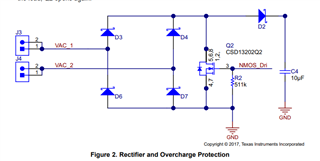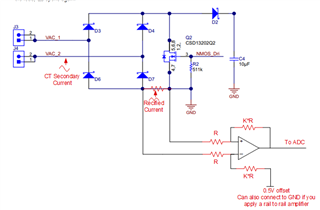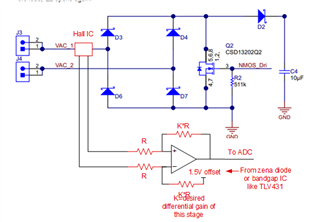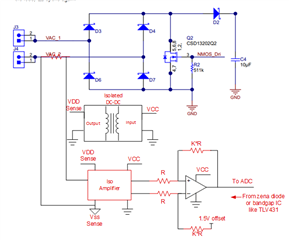Tool/software:
I want to design a self powering AC current sensor with following Concept:
This self-powered AC current sensor should consists of a split-core current transformer and is supplied via an AC conductor. The sensor is to supply itself, i.e. the Loxone Air module (MCU + transmitter unit), through energy harvesting. When enough energy has been harvested, the system switches to measuring. This means that the harvesting part is switched off and the current transformer is switched to a shunt resistor, from which the voltage drop is measured and thus the current can be inferred. As alternating current comes from the current transformer and only the RMS is to be measured, an "RMS to DC converter" may also be necessary before the value is read in by the ADC of the MCU. After recording the current value, the MCU goes back into sleep mode and the sensor is back in harvesting mode. Excess energy is to be stored in a supercapacitor for times when no primary current is flowing. The MCU should be woken up again for the next measurement using the wake-up pin. If possible, the MCU should send a "last will" before it runs out of energy completely. When current flows again and sufficient energy is available again, the MCU should restart.
Are there any reference desins from TI, or how could so a design look like. Are there any usefull components from TI that I can use for this sensor etc.
How can i solf this problem and how can dies cirucit look like.
Thanks for your help ;)







